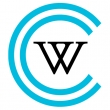Cover Letter Guidelines and Samples
This resource is part of the Career Essentials Series — find the full collection here!

A cover letter is typically a one-page letter or email that you submit when applying to a job or internship, along with your resume, to connect the dots between your skills and interests and the opportunity. A cover letter is a piece of persuasive writing that aims to convey to the employer why you're a great candidate and fit for the role. You should highlight what makes you stand out from others, but remember to keep your letter focused on how you will contribute to the employer, rather than on how the job will benefit you.

In addition to this written resource, you may find the webinar below to be a useful overview.
Cover Letter Samples
Full Time Job Cover Letter Sample
Full Time Job Cover Letter Sample 2
Internship Cover Letter Sample
Internship Cover Letter Sample 2
Getting Started
Before you start writing, reflect, brainstorm, and research to develop the information that will go into your cover letter. Here are some questions to consider:
- Put yourself in the employer’s shoes: Who is the ideal candidate? What are the top 2 or 3 skills, qualifications, and qualities that the employer is seeking for this role?
- To whom should you address the letter? When possible, your cover letter should be addressed to a certain person, typically a Director or Supervisor of the position.
- If you are unable to find someone’s specific name, you can use:
- Hiring Committee
- Hiring Manager
- If you are unable to find someone’s specific name, you can use:
- Why do you want the opportunity?
- What excites you most about this opportunity?
- What are the organization’s core values and mission? How do they market themselves? What type of language do they use? How do these align with your own?
- What makes you a good fit for this job and organization?
- When have you demonstrated key skills, qualifications, and qualities the employer is seeking?
If you are writing your first cover letter, or working to improve upon an existing cover letter, the video below is a helpful resource.
Writing the Letter
Introductory Paragraph
Grab the employer’s attention! Provide a brief introduction that includes the title of the position, who you are, and a thesis statement highlighting how your interests, skills, and values align with the role and organization. How will your introduction persuade them to continue reading your letter?
Body Paragraph(s)
We recommend including 1 – 3 body paragraphs using active language to demonstrate the two or three top skills, qualifications, or qualities that the employer is seeking for the position. Share your related experiences and explain their relevance to the position. Use specifics about the skills you’ve gained. Do not just copy and paste from your resume. These paragraphs provide you with an opportunity to tell a new and more in-depth story, beyond what the employer reads on your resume.
Final Paragraph
This is a brief conclusion where you can reiterate your excitement about applying and summarize some personal characteristics and skills that you bring to the job. Conclude with a thank you and a call to action!
- I look forward to speaking with you about my skills and qualifications.
- I look forward to discussing how my background meets your needs.
* NOTE: Cover letter guidelines can vary by industry. For more information, meet with one of our Industry Advisors or your Advisor for Career Exploration.
Before You Submit
Check that your cover letter meets the following best practices:
☐ Consistent formatting with your resume (same header, font, margins)
☐ Simple, clean font (ex. Times, Arial, Garamond)
☐ 10 – 12 pt font
☐ 0.5 to 1 in margins
☐ Error free (proper grammar & spelling)
☐ Concise
☐ Tailored to the type(s) of opportunities you are seeking
☐ Conveys your enthusiasm for the opportunity
☐ Go beyond what’s on your resume
☐ Include varied sentence structure (avoid starting every sentence with I)




